Amazon Textract is a machine studying (ML) service that robotically extracts textual content, handwriting, and information from any doc or picture. Amazon Textract has a Tables characteristic throughout the AnalyzeDocument API that gives the power to robotically extract tabular buildings from any doc. On this submit, we focus on the enhancements made to the Tables characteristic and the way it makes it simpler to extract data in tabular buildings from all kinds of paperwork.
Tabular buildings in paperwork similar to monetary experiences, paystubs, and certificates of research recordsdata are sometimes formatted in a means that allows straightforward interpretation of data. They typically additionally embrace data similar to desk title, desk footer, part title, and abstract rows throughout the tabular construction for higher readability and group. For the same doc previous to this enhancement, the Tables characteristic inside AnalyzeDocument would have recognized these parts as cells, and it didn’t extract titles and footers which are current outdoors the bounds of the desk. In such instances, customized postprocessing logic to determine such data or extract it individually from the API’s JSON output was obligatory. With this announcement of enhancements to the Desk characteristic, the extraction of assorted features of tabular information turns into a lot less complicated.
In April 2023, Amazon Textract launched the power to robotically detect titles, footers, part titles, and abstract rows current in paperwork by way of the Tables characteristic. On this submit, we focus on these enhancements and provides examples that will help you perceive and use them in your doc processing workflows. We stroll by means of tips on how to use these enhancements by means of code examples to make use of the API and course of the response with the Amazon Textract Textractor library.
Overview of answer
The next picture exhibits that the up to date mannequin not solely identifies the desk within the doc however all corresponding desk headers and footers. This pattern monetary report doc comprises desk title, footer, part title, and abstract rows.
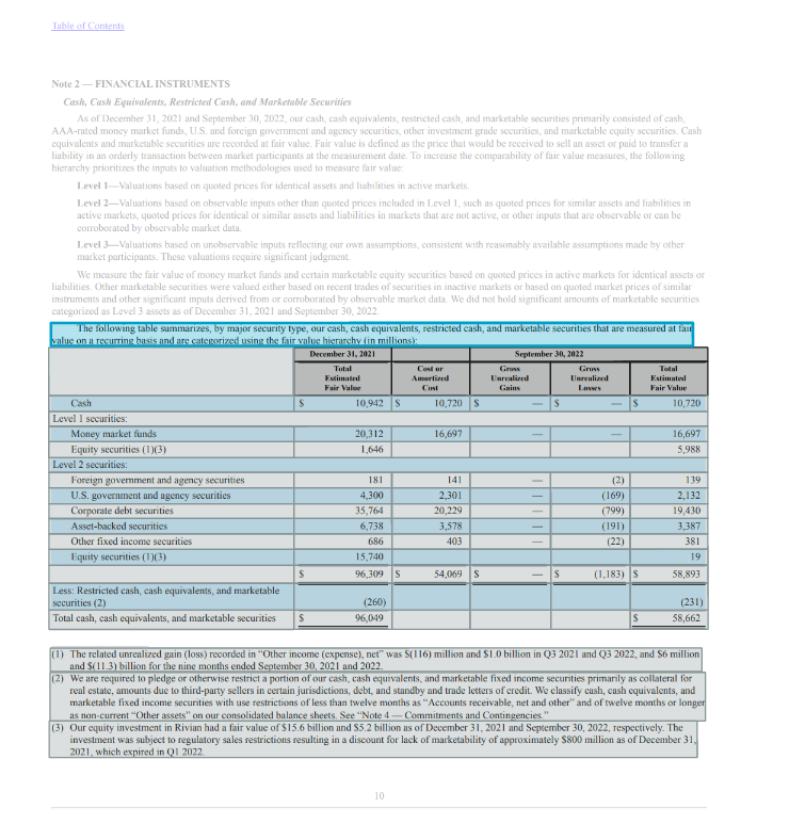
The Tables characteristic enhancement provides assist for 4 new parts within the API response that permits you to extract every of those desk parts with ease, and provides the power to tell apart the kind of desk.
Desk parts
Amazon Textract can determine a number of parts of a desk similar to desk cells and merged cells. These parts, often known as Blockobjects, encapsulate the small print associated to the element, such because the bounding geometry, relationships, and confidence rating. A Block represents objects which are acknowledged in a doc inside a bunch of pixels shut to one another. The next are the brand new Table Blocks launched on this enhancement:
- Desk title – A brand new
Blockkind referred to asTABLE_TITLEthat allows you to determine the title of a given desk. Titles will be a number of strains, that are sometimes above a desk or embedded as a cell throughout the desk. - Desk footers – A brand new
Blockkind referred to asTABLE_FOOTERthat allows you to determine the footers related to a given desk. Footers will be a number of strains which are sometimes under the desk or embedded as a cell throughout the desk. - Part title – A brand new
Blockkind referred to asTABLE_SECTION_TITLEthat allows you to determine if the cell detected is a bit title. - Abstract cells – A brand new
Blockkind referred to asTABLE_SUMMARYthat allows you to determine if the cell is a abstract cell, similar to a cell for totals on a paystub.

Forms of tables
When Amazon Textract identifies a desk in a doc, it extracts all the small print of the desk right into a top-level Block kind of TABLE. Tables can are available in numerous sizes and styles. For instance, paperwork typically comprise tables that will or might not have a discernible desk header. To assist distinguish some of these tables, we added two new entity varieties for a TABLE Block: SEMI_STRUCTURED_TABLE and STRUCTURED_TABLE. These entity varieties provide help to distinguish between a structured versus a semistructured desk.
Structured tables are tables which have clearly outlined column headers. However with semi-structured tables, information may not comply with a strict construction. For instance, information might seem in tabular construction that isn’t a desk with outlined headers. The brand new entity varieties provide the flexibleness to decide on which tables to maintain or take away throughout post-processing. The next picture exhibits an instance of STRUCTURED_TABLE and SEMI_STRUCTURED_TABLE.
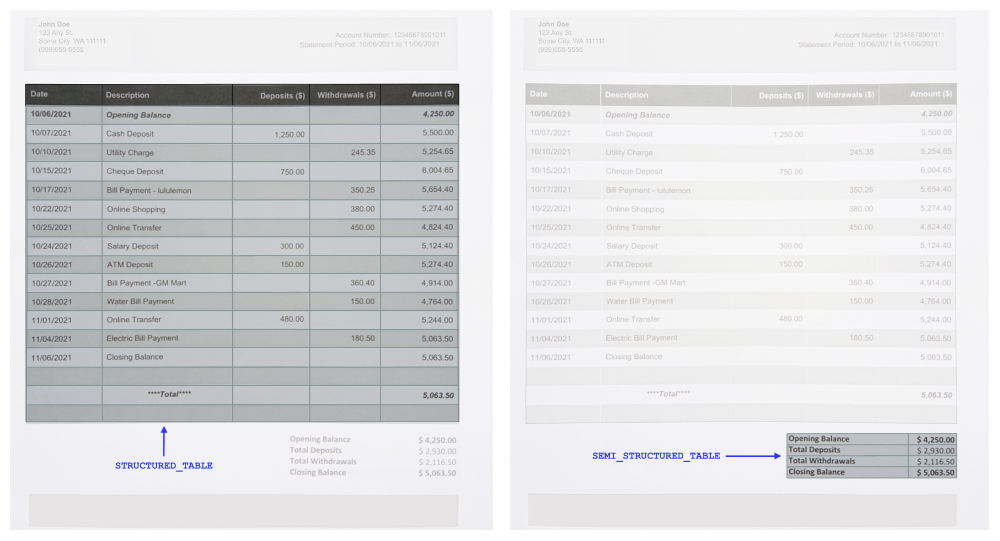
Analyzing the API output
On this part, we discover how you should use the Amazon Textract Textractor library to postprocess the API output of AnalyzeDocument with the Tables characteristic enhancements. This lets you extract related data from tables.
Textractor is a library created to work seamlessly with Amazon Textract APIs and utilities to subsequently convert the JSON responses returned by the APIs into programmable objects. You too can use it to visualise entities on the doc and export the information in codecs similar to comma-separated values (CSV) recordsdata. It’s meant to assist Amazon Textract prospects in establishing their postprocessing pipelines.
In our examples, we use the next pattern web page from a 10-Ok SEC submitting doc.
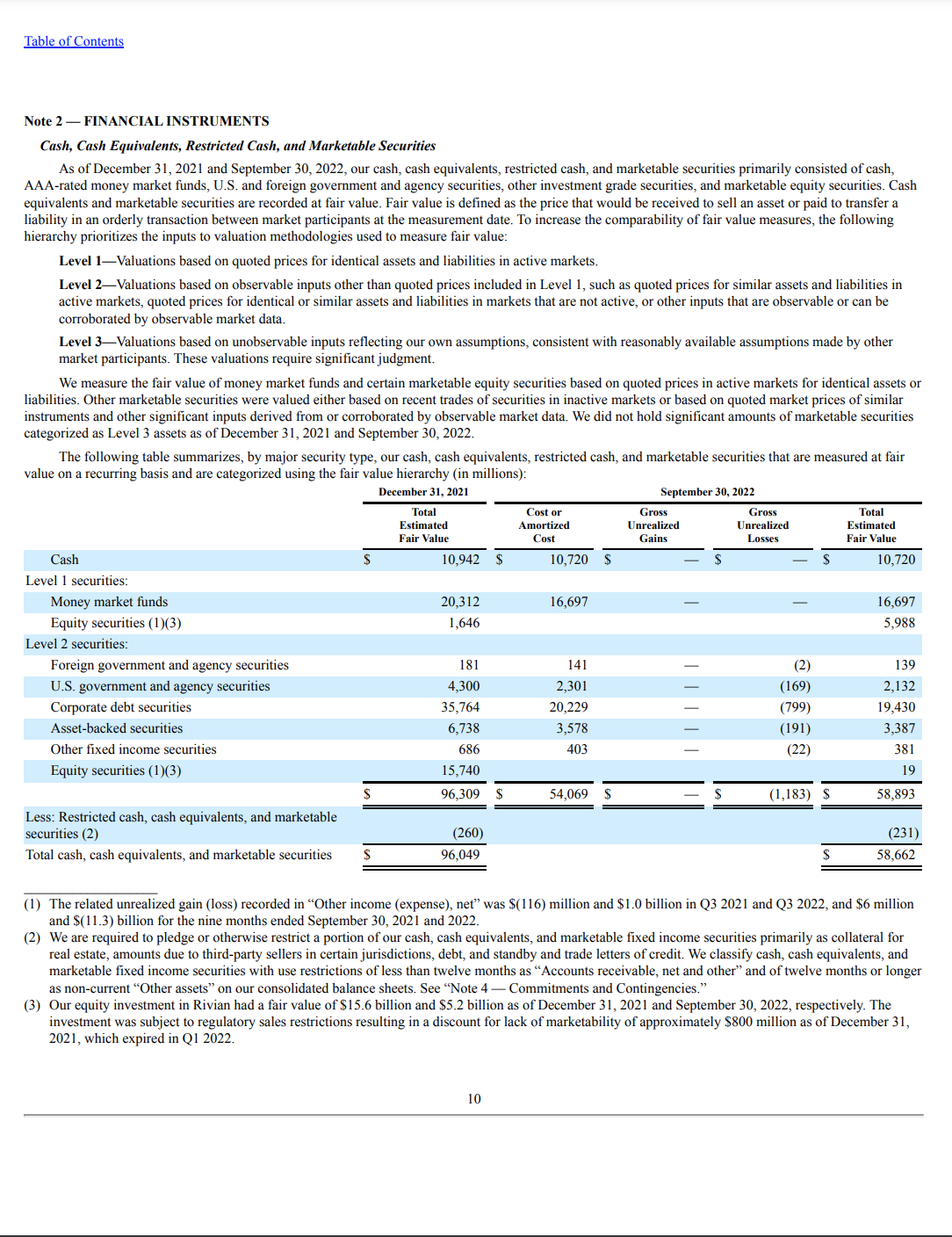
The next code will be discovered inside our GitHub repository. To course of this doc, we make use of the Textractor library and import it for us to postprocess the API outputs and visualize the information:
Step one is to name Amazon Textract AnalyzeDocument with Tables characteristic, denoted by the options=[TextractFeatures.TABLES] parameter to extract the desk data. Notice that this technique invokes the real-time (or synchronous) AnalyzeDocument API, which helps single-page paperwork. Nevertheless, you should use the asynchronous StartDocumentAnalysis API to course of multi-page paperwork (with as much as 3,000 pages).
The doc object comprises metadata concerning the doc that may be reviewed. Discover that it acknowledges one desk within the doc together with different entities within the doc:
Now that we have now the API output containing the desk data, we visualize the completely different parts of the desk utilizing the response construction mentioned beforehand:
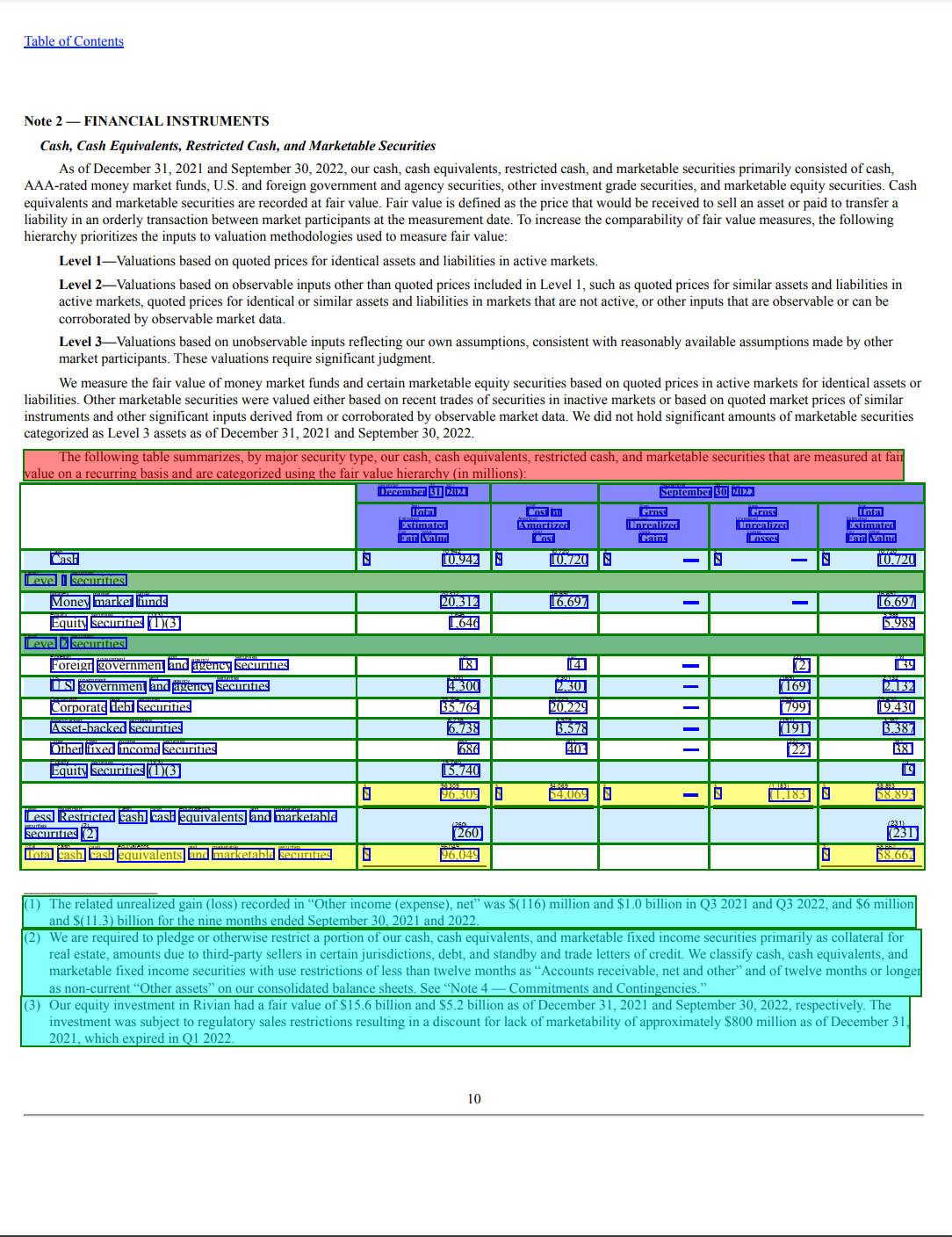
The Textractor library highlights the varied entities throughout the detected desk with a unique coloration code for every desk component. Let’s dive deeper into how we will extract every component. The next code snippet demonstrates extracting the title of the desk:
Equally, we will use the next code to extract the footers of the desk. Discover that table_footers is an inventory, which implies that there will be a number of footers related to the desk. We will iterate over this checklist to see all of the footers current, and as proven within the following code snippet, the output shows three footers:
Producing information for downstream ingestion
The Textractor library additionally helps you simplify the ingestion of desk information into downstream programs or different workflows. For instance, you possibly can export the extracted desk information right into a human readable Microsoft Excel file. On the time of this writing, that is the one format that helps merged tables.
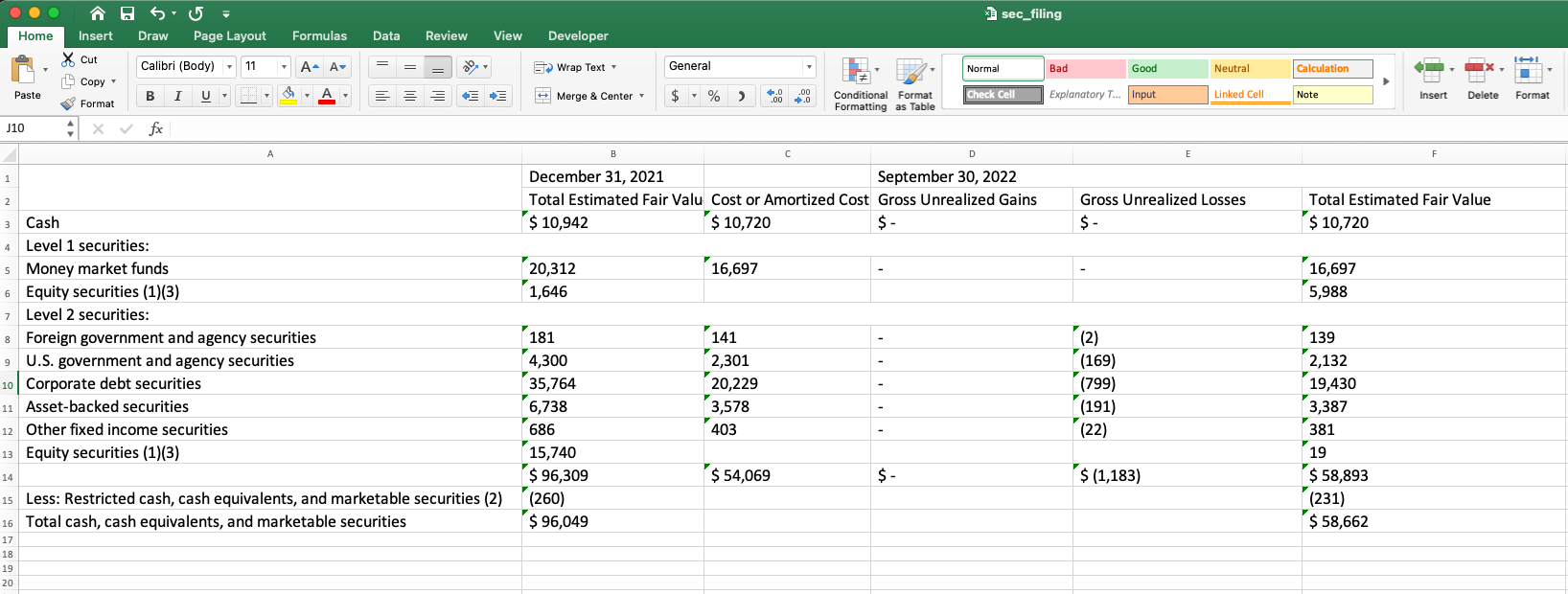
We will additionally convert it to a Pandas DataFrame. DataFrame is a well-liked selection for information manipulation, evaluation, and visualization in programming languages similar to Python and R.
In Python, DataFrame is a major information construction within the Pandas library. It’s versatile and highly effective, and is usually the primary selection for information evaluation professionals for numerous information evaluation and ML duties. The next code snippet exhibits tips on how to convert the extracted desk data right into a DataFrame with a single line of code:

Lastly, we will convert the desk information right into a CSV file. CSV recordsdata are sometimes used to ingest information into relational databases or information warehouses. See the next code:
Conclusion
The introduction of those new block and entity varieties (TABLE_TITLE, TABLE_FOOTER, STRUCTURED_TABLE, SEMI_STRUCTURED_TABLE, TABLE_SECTION_TITLE, TABLE_FOOTER, and TABLE_SUMMARY) marks a major development in extraction of tabular buildings from paperwork with Amazon Textract.
These instruments present a extra nuanced and versatile method, catering to each structured and semistructured tables and ensuring that no essential information is missed, no matter its location in a doc.
This implies we will now deal with numerous information varieties and desk buildings with enhanced effectivity and accuracy. As we proceed to embrace the facility of automation in doc processing workflows, these enhancements will little doubt pave the best way for extra streamlined workflows, greater productiveness, and extra insightful information evaluation. For extra data on AnalyzeDocument and the Tables characteristic, confer with AnalyzeDocument.
In regards to the authors
 Raj Pathak is a Senior Options Architect and Technologist specializing in Monetary Providers (Insurance coverage, Banking, Capital Markets) and Machine Studying. He makes a speciality of Pure Language Processing (NLP), Massive Language Fashions (LLM) and Machine Studying infrastructure and operations tasks (MLOps).
Raj Pathak is a Senior Options Architect and Technologist specializing in Monetary Providers (Insurance coverage, Banking, Capital Markets) and Machine Studying. He makes a speciality of Pure Language Processing (NLP), Massive Language Fashions (LLM) and Machine Studying infrastructure and operations tasks (MLOps).
 Anjan Biswas is a Senior AI Providers Options Architect with concentrate on AI/ML and Knowledge Analytics. Anjan is a part of the world-wide AI companies staff and works with prospects to assist them perceive, and develop options to enterprise issues with AI and ML. Anjan has over 14 years of expertise working with world provide chain, manufacturing, and retail organizations and is actively serving to prospects get began and scale on AWS AI companies.
Anjan Biswas is a Senior AI Providers Options Architect with concentrate on AI/ML and Knowledge Analytics. Anjan is a part of the world-wide AI companies staff and works with prospects to assist them perceive, and develop options to enterprise issues with AI and ML. Anjan has over 14 years of expertise working with world provide chain, manufacturing, and retail organizations and is actively serving to prospects get began and scale on AWS AI companies.
 Lalita Reddi is a Senior Technical Product Supervisor with the Amazon Textract staff. She is concentrated on constructing machine learning-based companies for AWS prospects. In her spare time, Lalita likes to play board video games, and go on hikes.
Lalita Reddi is a Senior Technical Product Supervisor with the Amazon Textract staff. She is concentrated on constructing machine learning-based companies for AWS prospects. In her spare time, Lalita likes to play board video games, and go on hikes.


